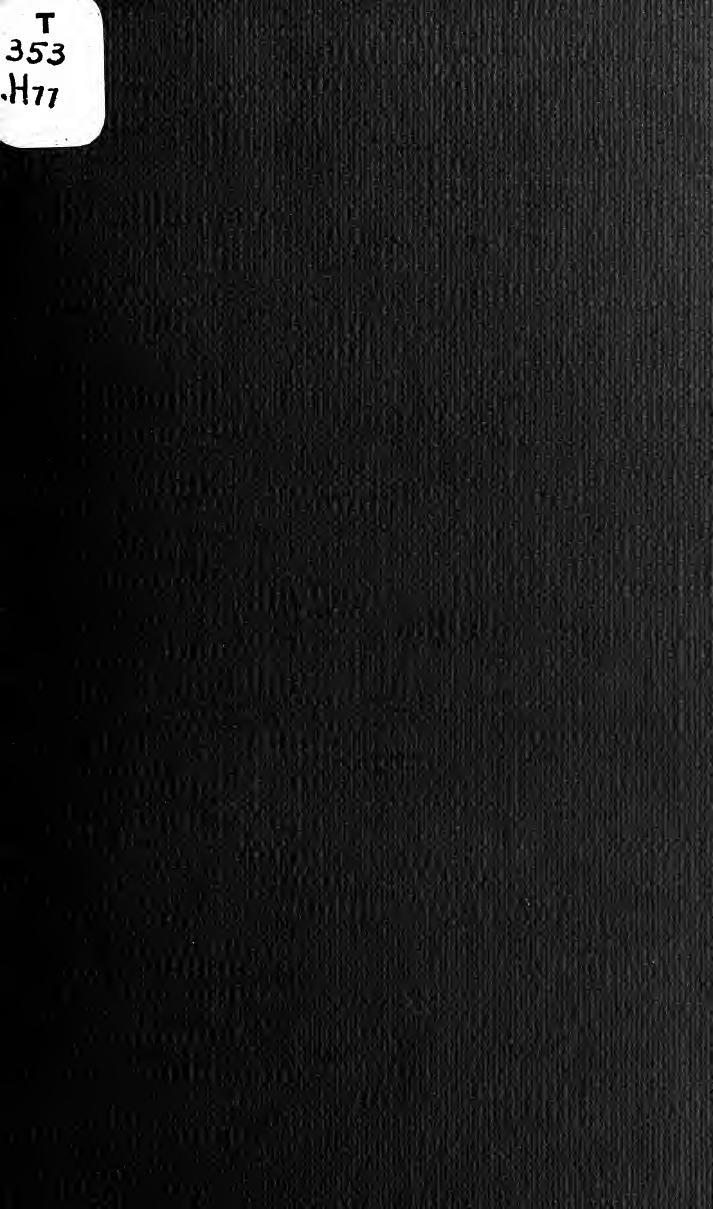An introduction to mechanical drawing by Honey Frederic R

Author:Honey, Frederic R[obertson] [from old catalog]
Language: eng
Format: epub, pdf
Tags: Mechanical drawing
Publisher: New Haven : The Stafford printing co.
Published: 1881-03-25T05:00:00+00:00
upon it in its true length, and its elevation will form with the ground line an angle equal to that formed by the axis with the horizontal plane, viz. 45°. Also since the base is perpendicular to the axis it is perpendicular to the vertical plane, and will be projected upon it in a straight line, perpendicular to the elevation of the axis. Therefore assume a point a on the ground line, at a distance of four inches from the right side of the paper. From a draw ac forming an angle of 45° with the ground line, and make ac equal to four inches, the diameter of the base. Lay off a distance ab equal to two inches. From b draw bd forming an angle of 45° with the ground line ; that is draw bd perpendicular to ac. Lay off ba equal to six inches, the height of the cone. Join da and dc. dac is the elevation required. The plan will be found as follows: since the axis is parallel to the vertical plane it will be projected upon the horizontal plane in a straight line, parallel to the ground line. Therefore draw d'o parallel to the ground line, at a distance from it equal to four inches. From d and b respectively draw dd' and bb', perpendicular to the ground line, intersecting d'o in d' and o. d'o is the plan of the axis, and the point 0 is the plan of the centre of the base. The ellipse a'b'c'e', which is the plan of the circumference of the base, will be constructed as in the preceding problem, b'e' equal to four inches, the diameter of the base, will be the major axis, and a'c' the minor axis, determined by dropping perpendiculars from the points a and c, intersecting dc' in the points a' and c'. From d' draw d'g' and d'f'y each tangent to the ellipse. The lines d'g' and d'f are the extreme elements of the cone in the plan—the object being seen in the direction of the vertical arrow. The part of the ellipse f'a'g' will evidently be drawn broken, since it is invisible from the point of sight. In inking the ellipses in this Plate and in Plate V, a large portion of each curve may be drawn correctly enough for all practical purposes by arcs of circles. Theoretically this method of drawing an ellipse is incorrect; but since arcs may be constructed which very nearly coincide with the curve for a considerable distance, it is desirable, in order to make all the parts symmet-
Download
An introduction to mechanical drawing by Honey Frederic R.pdf
This site does not store any files on its server. We only index and link to content provided by other sites. Please contact the content providers to delete copyright contents if any and email us, we'll remove relevant links or contents immediately.
The Vikings: Conquering England, France, and Ireland by Wernick Robert(79842)
Ali Pasha, Lion of Ioannina by Eugenia Russell & Eugenia Russell(40100)
The Conquerors (The Winning of America Series Book 3) by Eckert Allan W(36959)
The Vikings: Discoverers of a New World by Wernick Robert(36903)
Cecilia; Or, Memoirs of an Heiress — Volume 1 by Fanny Burney(32395)
Cecilia; Or, Memoirs of an Heiress — Volume 3 by Fanny Burney(31771)
Cecilia; Or, Memoirs of an Heiress — Volume 2 by Fanny Burney(31740)
Empire of the Sikhs by Patwant Singh(22920)
The Secret History by Donna Tartt(18785)
Hans Sturm: A Soldier's Odyssey on the Eastern Front by Gordon Williamson(18447)
Cat's cradle by Kurt Vonnegut(15125)
Pimp by Iceberg Slim(14250)
Sapiens: A Brief History of Humankind by Yuval Noah Harari(14180)
Talking to Strangers by Malcolm Gladwell(13155)
Norse Mythology by Gaiman Neil(13154)
Leonardo da Vinci by Walter Isaacson(13124)
4 3 2 1: A Novel by Paul Auster(12244)
Underground: A Human History of the Worlds Beneath Our Feet by Will Hunt(11992)
The Radium Girls by Kate Moore(11885)
